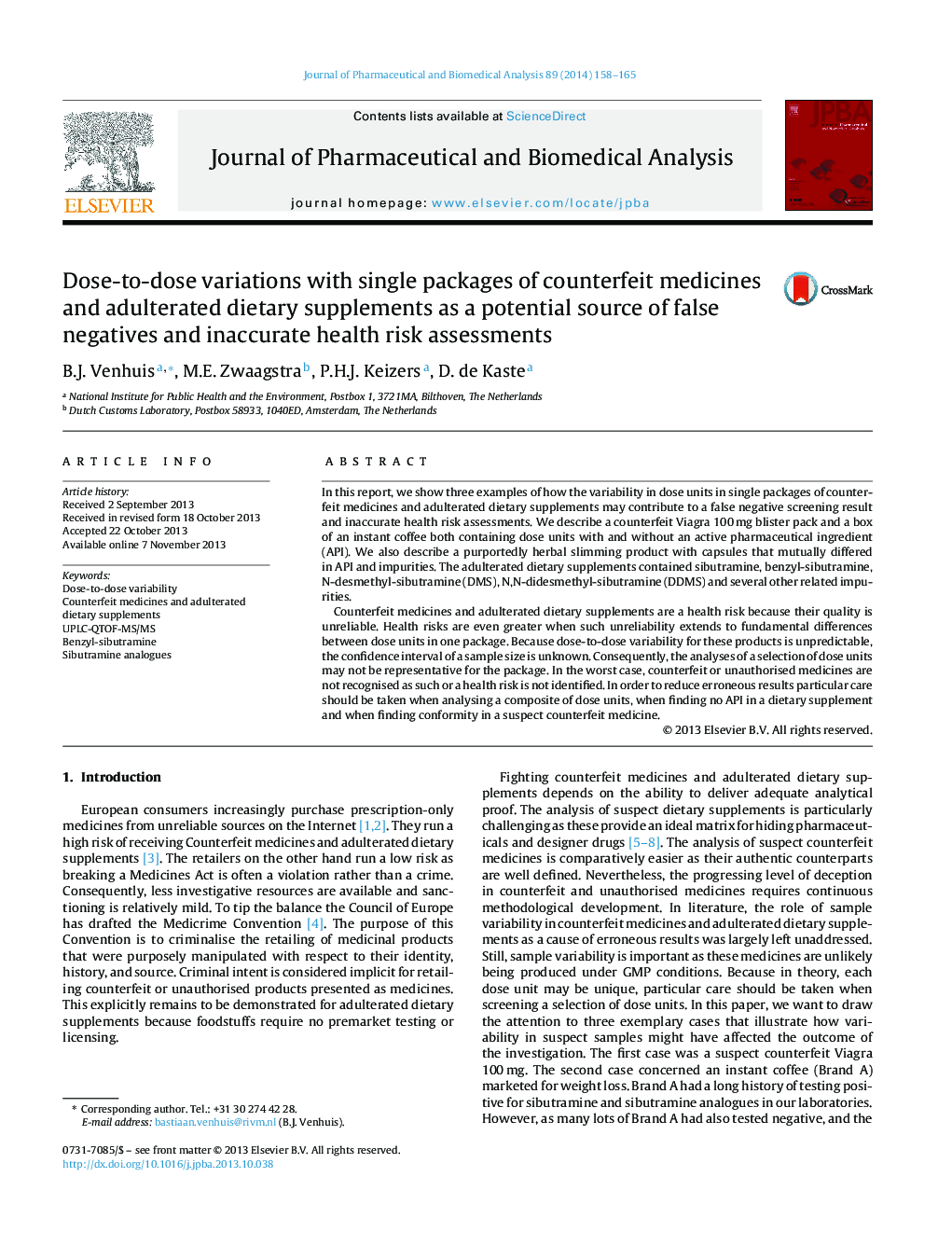| کد مقاله | کد نشریه | سال انتشار | مقاله انگلیسی | نسخه تمام متن |
|---|---|---|---|---|
| 1221477 | 1494646 | 2014 | 8 صفحه PDF | دانلود رایگان |
• Illicit medicines are reported with a variable composition within a single package.
• Dose units in a single package may have different API's and impurities.
• The presence of placebo dose units may produce a false negative screening result.
• Novel sibutramine analogues were detected by using UPLC-QTOF-MS/MS.
In this report, we show three examples of how the variability in dose units in single packages of counterfeit medicines and adulterated dietary supplements may contribute to a false negative screening result and inaccurate health risk assessments. We describe a counterfeit Viagra 100 mg blister pack and a box of an instant coffee both containing dose units with and without an active pharmaceutical ingredient (API). We also describe a purportedly herbal slimming product with capsules that mutually differed in API and impurities. The adulterated dietary supplements contained sibutramine, benzyl-sibutramine, N-desmethyl-sibutramine (DMS), N,N-didesmethyl-sibutramine (DDMS) and several other related impurities.Counterfeit medicines and adulterated dietary supplements are a health risk because their quality is unreliable. Health risks are even greater when such unreliability extends to fundamental differences between dose units in one package. Because dose-to-dose variability for these products is unpredictable, the confidence interval of a sample size is unknown. Consequently, the analyses of a selection of dose units may not be representative for the package. In the worst case, counterfeit or unauthorised medicines are not recognised as such or a health risk is not identified. In order to reduce erroneous results particular care should be taken when analysing a composite of dose units, when finding no API in a dietary supplement and when finding conformity in a suspect counterfeit medicine.
Figure optionsDownload as PowerPoint slide
Journal: Journal of Pharmaceutical and Biomedical Analysis - Volume 89, 15 February 2014, Pages 158–165
